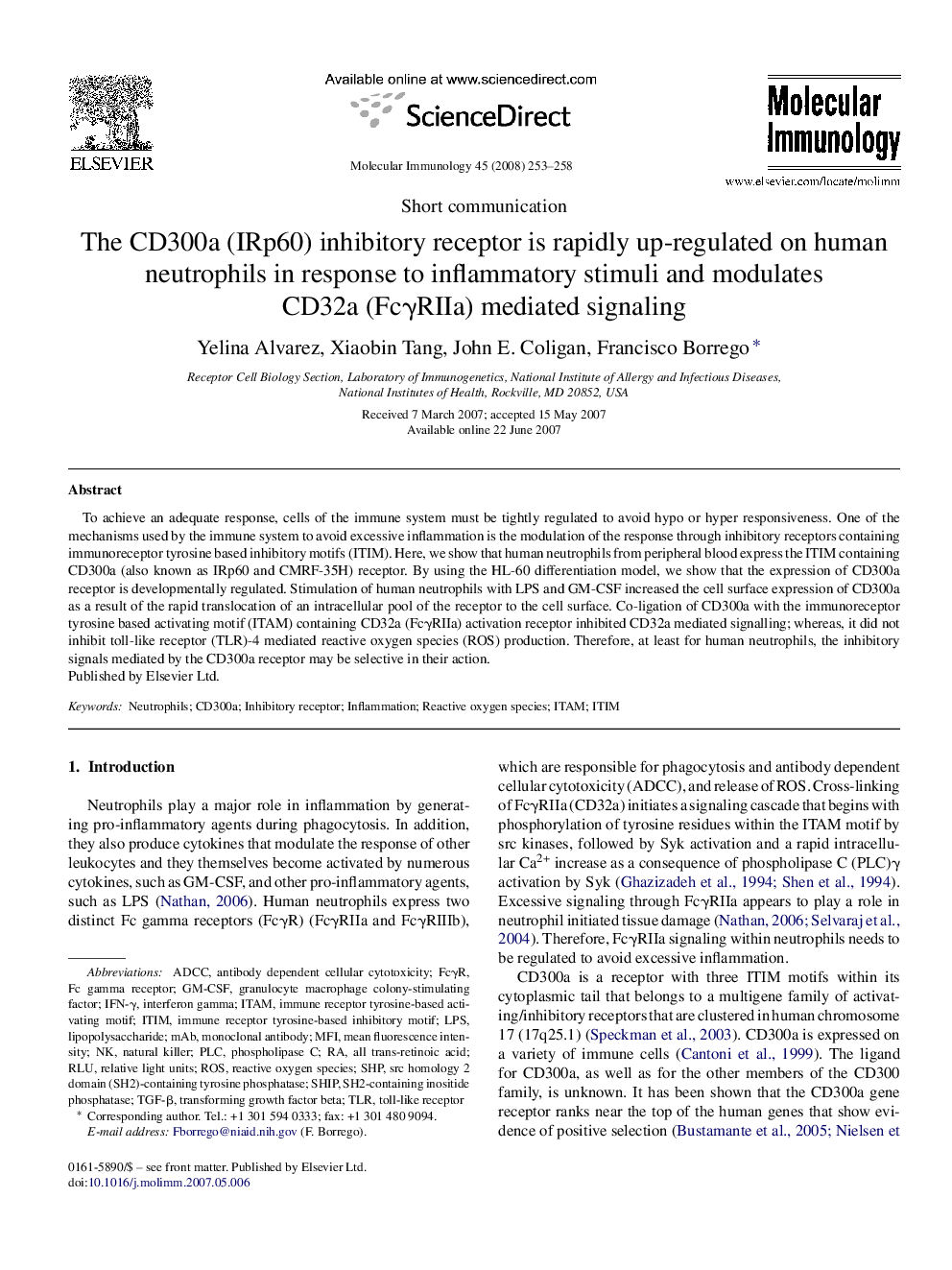| Article ID | Journal | Published Year | Pages | File Type |
|---|---|---|---|---|
| 5918351 | Molecular Immunology | 2008 | 6 Pages |
Abstract
To achieve an adequate response, cells of the immune system must be tightly regulated to avoid hypo or hyper responsiveness. One of the mechanisms used by the immune system to avoid excessive inflammation is the modulation of the response through inhibitory receptors containing immunoreceptor tyrosine based inhibitory motifs (ITIM). Here, we show that human neutrophils from peripheral blood express the ITIM containing CD300a (also known as IRp60 and CMRF-35H) receptor. By using the HL-60 differentiation model, we show that the expression of CD300a receptor is developmentally regulated. Stimulation of human neutrophils with LPS and GM-CSF increased the cell surface expression of CD300a as a result of the rapid translocation of an intracellular pool of the receptor to the cell surface. Co-ligation of CD300a with the immunoreceptor tyrosine based activating motif (ITAM) containing CD32a (FcγRIIa) activation receptor inhibited CD32a mediated signalling; whereas, it did not inhibit toll-like receptor (TLR)-4 mediated reactive oxygen species (ROS) production. Therefore, at least for human neutrophils, the inhibitory signals mediated by the CD300a receptor may be selective in their action.
Keywords
PLCTGF-βITAMFcγRRLUITIMGM-CSFTLRADCCIFN-γSHPLPSmAbMFInatural killerROSantibody dependent cellular cytotoxicityMonoclonal antibodyinflammationTransforming Growth Factor BetaToll-like receptorphospholipase Clipopolysaccharidegranulocyte macrophage colony-stimulating factormean fluorescence intensityNeutrophilsAll trans-Retinoic Acidrelative light unitsSHIPInterferon gammaReactive oxygen speciesinhibitory receptorFc gamma receptor
Related Topics
Life Sciences
Biochemistry, Genetics and Molecular Biology
Molecular Biology
Authors
Yelina Alvarez, Xiaobin Tang, John E. Coligan, Francisco Borrego,
